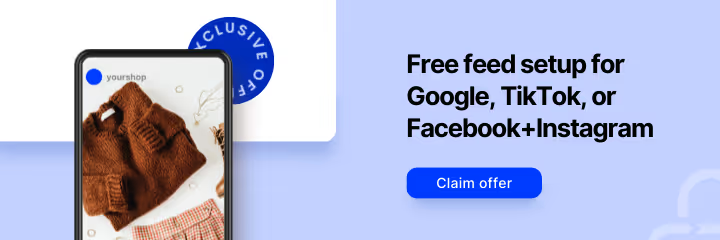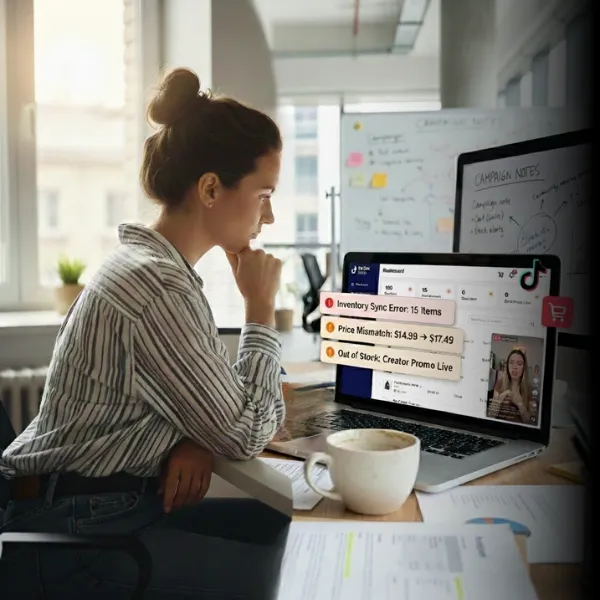Here's something to consider: you may be misjudging your ROI.
Traditionally ecommerce merchants tend to measure their return on investment based on a one-time capital investment and not on CLV. Your goal on Google Shopping is to sell to a customer repeatedly, not just one time.
It's easy to get caught up in what many consider a sign of the times when it comes to the tech world: instant gratification. Serve the product up to a consumer, seal the deal, make your money, and forget about the former as you move onto your next customer.
Is that really the smartest business move?

Looking Beyond the Single Sale
Each sale not as the end of the sales journey, but as the beginning.
The beauty of Google Shopping (compared to, say, Amazon) is that you own the customer once the point of sale has been completed, so you can market to them as you see fit from that point forward.
Where some merchants go wrong is they think of all the time and money spent as a calculation for one single sale.
They rack their brain over the hours and dollars they spent to, (1) evaluate and select the proper campaign type that could potentially drive the most business your way based on the core traffic demographic of said campaign, (2) ensure your product feed meets the specific requirements of said Google Merchant Center, and (3) continually monitor your campaign's effectiveness.
But the math is wrong to begin with. If done right, you will have done these things not just to acquire a sale, but to acquire a customer. A customer who, if nurtured, will return again and again to buy from you.
Google Shopping as a Long-Term Investment
Stop looking at each Google PLA impression, click and conversion as a single unit in a vacuum.
Instead, start looking at each of these KPIs as part of a holistic strategy to convert one-time shoppers into lifetime customers. As such, PLAs then become key components to a larger marketing funnel that applies a variety of techniques to push shoppers along touchpoints to keep them coming back.
The more times a shopper visits your store and the more times a customer purchases from you, the stronger your relationship with them will be. Particularly if they have a good experience each time. That means they’re more likely to become a brand ambassador, spreading the word about your products to others, creating a dream scenario where your products sell themselves.
But it all starts with really good PLAs.
Developing a CLV Strategy
Customer Lifetime Value is a prediction of the net profit attributed to the entirety of the relationship with a customer.
Measuring CLV can be challenging, given the multiple variables involved, but essentially it looks something like this:
Formula: (average order value / 1 - repeat purchase rate) - CPA
For example:
If...
- Average order value is $80
- Customer return rate is 25%
- Cost per acquisition is $12
Then...
$80 / ( 1 - 0.25) = $106.67 - 3 = $94.67
Prep Campaigns for CLV
1. Be There When They Look for You
Google Shopping does an excellent job of driving qualified traffic. Shopping SERPs are able to quickly help shoppers identify what they're looking for and deliver them options via highly sophisticated search technology.
Whether the customer ends up buying from you or not, your product(s) and brand(s) have been served up to the consumer for their viewing and shopping pleasure. This allows Google Shopping to play a big role when it comes to indirect selling and brand awareness, both of which ultimately add to the potential CLV of a consumer.
2. Diversify Your Google Strategy
Yes, there's been quite a few success stories of merchants who solely focus on the big three: Google Shopping. But there's more to Google than Shopping.
Explore all of Google's retail offerings to find your perfect strategy. Maybe it's Google Shopping + Google Local. Maybe it's Google Express and Shopping Actions. If you own your brand, Google Manufacturer Center. Maybe it's all of the above + Google Dynamic Remarketing. The point is to use Google's market saturation to your advantage.
3. Outrank Competitors
None of it matters if your competitors are also doing this -- and doing it better. Getting into the SERPs is half the battle. Achieving competitive ad rank/ad placement is the other half. How do you outrank the competition?
It's rumored that, for Google Shopping campaigns, Quality Score is the direct result of your feed quality. Translation: The "completeness" and accuracy of your product data feed directly impacts how often your products are found.
A good Google Shopping feed management software can help you outperform competitors by ensuring feed compliance and automating PLA optimization.

6 Steps for Creating CLV with Google Shopping
Step 1: Bring in Customers
What you'll need:
- A Google Shopping campaign
- Optimized PLAs
Make sure your PLA has a clear and specific offer. Provide high-quality data. This not only increases your odds of making a sale, but also associates your company with professionalism right off the bat. Where possible, include your brand name to start helping people develop a connection with your company.
Run your PLAs through the Google Shopping PLA best practices checklist to make the most of every impression.
Step 2: Seal the Deal
What you'll need:
- Optimized product pages
- An easy checkout
You’ve heard this story before. Product page optimization is the bread and butter of online retail sales. To achieve fully optimized product pages, you’ll need:
- A variety of great product images.
- Product descriptions that not only describe the product and its specs, but also clarify its uses and applications.
- Social proof. Ideally, in the form of product reviews, though social media and blog mentions can also be put to use. If your store and/or product is new, you’ll need a strategy to getting product reviews.
- Conversion-focused design. That means an uncluttered layout that draws attention only to the product the shopper clicked on (and not to everything else you want to sell him; that comes later).
- Provide in-depth visual detail. Great product images are a baseline. They’re mandatory. No exceptions. The next step is to go into even greater visual detail. That means product videos.
From here, they’ll head to the checkout. Make sure you capture their email address and permission to add them to a mailing list. Entice them with deals or useful information to get their sign-up. It is also valuable to gather key demographic info to get a better sense of who they are and what they are interested in.
A best practice is to offer the customer the option to create an account after they’ve made the purchase. This way it doesn’t serve as a deterrent to making the purchase, but makes future purchases easier and gives you access to their contact information.
Step 3: Build a Rapport
What you'll need:
- Transactional emails
Don’t overlook this step in the sales funnel. Transactional emails get eight times more opens and clicks than other types of email – and they can generate six times more revenue.
You also don’t need permission to send a transactional email; it’s expected. So make use of it. Upsell other items. Promote your social media. Plug your newsletter. And show off your brand’s personality.
Step 4: Continue the Conversation
What you'll need:
- Email marketing
Email marketing is the most trusted form of communication. A surprising 77% of consumers prefer email over other online forms of communication.
So now that you have that email address, put it to use! Share new or related product offers. Make your communication as personalized as possible. You could see up to six times higher transaction rates for your efforts.
Step 5: Stay Top-of-Mind
What you'll need:
- Remarketing ads campaign
"Americans buy the same 150 items, which accounts for 85% of household needs,” says Jami Oetting of Hubspot.
So there’s a good chance, your customer will need/want to buy your product again. Depending on the product, that might be next month, three months from now or next year. That difference is important because it can determine how you time remarketing initiatives.
It can also be the right touch to persuade browsers to commit to a purchase. If someone clicks through that email you sent them in Step 4, they may still need another nudge to make that purchase. With remarketing, you can gently remind them of the product offer as they surf the Web or visit their social media accounts.
Similarly, if they clicked on the PLA but did not make a purchase, remarketing can be a helpful reminder to them about your product while they are still in research mode.
Step 6: Track, Tweak, Repeat
What you'll need:
- Analytics/tracking
- An effective marketing funnel
- A process for A/B testing
Once you’ve created an effective marketing funnel, see what small things you can do to improve it. Run A/B tests and take action based on the results. Consider trying other techniques to encourage repeat purchases, such as:
- Creating a customer loyalty program.
- Offering discounts or deals to encourage customers to return.
- Sending a reminder once your product lifespan has ended, if applicable.
- Setting up abandoned cart emails.
- Using cookies to offer personalized offers to past customers on your site.
The key is to stay connected and be top-of-mind at the right moments. The more you can develop the relationship after that first click on a PLA, the likelier you’ll be to create long-term customers and the higher your potential return on investment.
Conclusion
Google Shopping can be invaluable resource when it comes to building your customer base.
Stop measuring the ROI of your Google Shopping campaigns using cost per sale; make CLV the standard. Think of each sale not as the end of the sales journey, but as the beginning of lifelong relationship with your customer.
The key to growing your customers’ lifetime value with Google Shopping, as with any acquisition channel, is nurturing each acquired customer by exceeding their expectations to keep them coming back.





%20).webp)